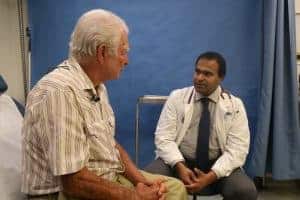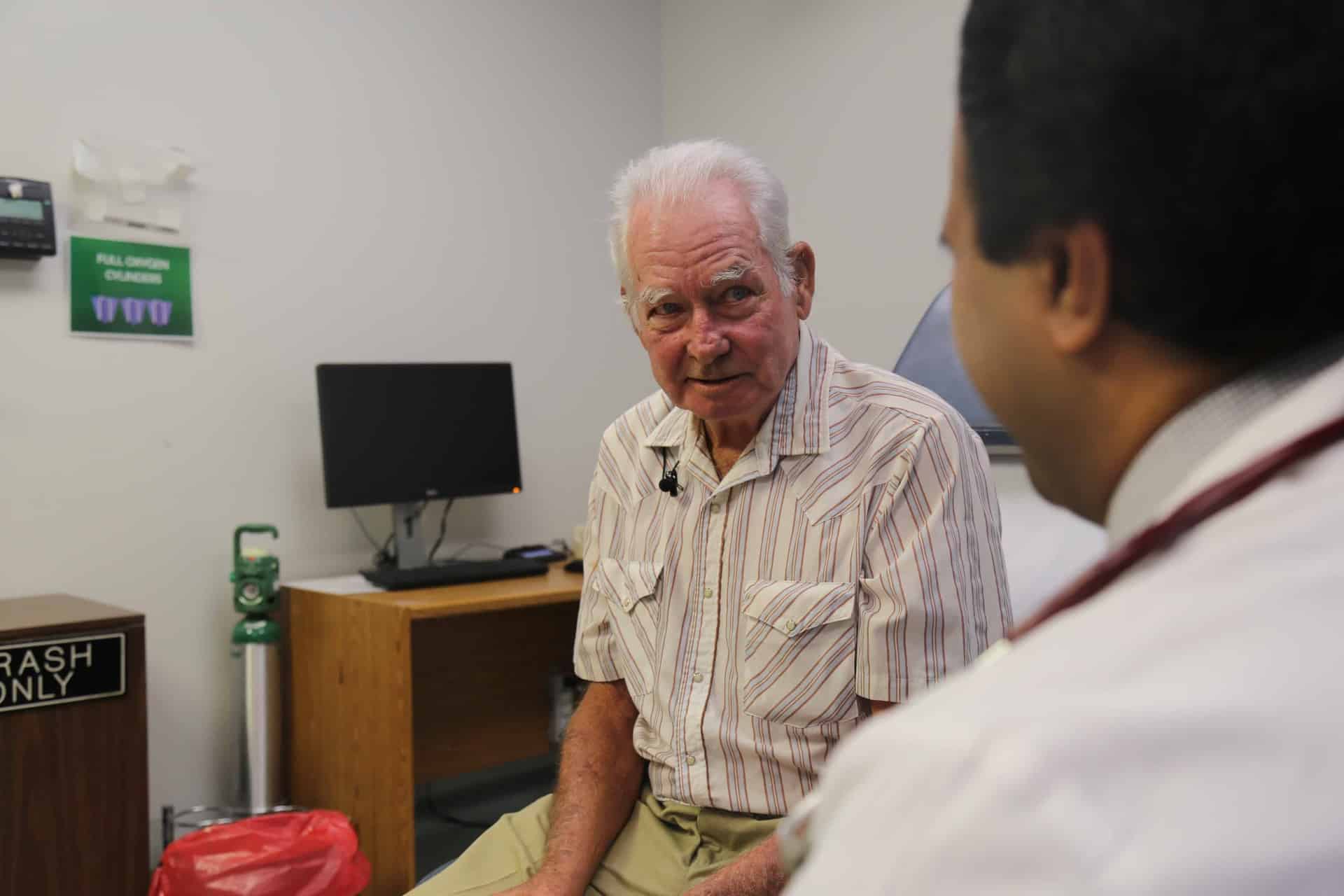Warren Man Finds Relief of Abdominal Pain
| Nov. 13, 2017 | Charles Goins was unsure exactly what ailed him, but he knew the result was excruciating pain in his abdomen.
When the discomfort began in December, the 69-year-old Warren native realized immediately that something was wrong. He spent the next several days in a hospital with a pain he had never experienced before and his return home was short-lived.
“The next morning the pain returned, I was in the ambulance coming back to Little Rock,” said Goins. “It was very, very painful.”
Goins was in and out of the hospital for the next several months, all the while, answers as to what caused his discomfort seemed as elusive as finding relief. For an active person like Goins, who unintentionally lost 60 pounds, those months were agonizing.
There was no fishing, no hunting and no yard work because the pain was too much.
“It was miserable,” he said. “I wasn’t strong enough to do anything. Some days, I walked out to my truck and could hardly make it. I got so weak it was unbelievable. I couldn’t sleep, I couldn’t eat and didn’t want to eat. I honestly thought I was going to die.”
In August, during another hospital stay, Goins was transferred to UAMS.
A scan revealed Goins had chronic pancreatitis, the inflammation of the pancreas, and an abscess on his pancreas. Goins was then referred to Benjamin Tharian, M.D., an interventional gastroenterologist, director of endoscopy and assistant professor in the UAMS College of Medicine’s Division of Gastroenterology and Hepatology.

Benjamin Tharian, M.D., is an interventional gastroenterologist at UAMS and director of endoscopy in the UAMS College of Medicine’s Division of Gastroenterology and Hepatology.
“The most common cause of pancreatitis is gallstones and alcohol abuse. The pancreas’ main function is to produce digestive juices and enzymes and insulin that remain inactive within the pancreas,” said Tharian. “During an episode of pancreatitis, there is a release of active enzymes within the pancreas, which automatically digests the organ. As was the case with Mr. Goins, fluid can leak out of the pancreas during this process and form a pseudocyst.”
The majority of pancreatic cysts will improve and disappear on their own, Tharian said, but other times, as with Goins, intervention is required. To avoid an invasive surgery and a long recovery time, Tharian offered a procedure known as endoscopic-ultrasound-guided cystogastrostomy.
“The special camera equipped with the ultrasound goes through the mouth and into the stomach at which point a hole is made in the stomach wall to access the cyst followed by placement of a stent under endoscopic ultrasound guidance,” said Tharian. “Then, the cyst drains into the stomach and its contents are eliminated by the body.”
The procedure itself typically takes less than half an hour and often requires an overnight stay for observation. Tharian said he has started sending patients home the same day of late, with equally good outcomes. Patients return after a few weeks for a follow-up scan to see if the cyst has completely collapsed. If so, a brief outpatient endoscopic procedure is done to remove the stent.
The procedure is advantageous to patients like Goins looking to avoid major surgery and a strenuous recovery.
“I couldn’t have stood surgery, I don’t think I was strong enough,” said Goins, who had the procedure in August. “The recovery at UAMS was so quick and easy. I went to getting well immediately.”
A few months following his surgery, Goins is almost back to full strength, has gained back 20 pounds and most importantly has returned to the active lifestyle he enjoys.
Tharian has done more than 60 procedures of this kind over the last 18 months, with excellent outcomes comparable to those results seen elsewhere in the country.
